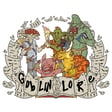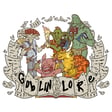
Episode 21: Parun Spice Latte with Titus Lunter, Part I
Hello, Podwalkers, and welcome to the Goblin Lore Podcast!
In our twenty-first episode, the guys talk with Magic: the Gathering artist Titus Lunter, who not only has done plenty of illustrations for Magic cards – he also has been a member of the concept team for at least two sets (Amonkhet and Guilds of Ravnica). Titus discusses with us the purpose of nostalgia in establishing the mood of the set, and some of the coincidental real-world analogies in Ravnica this time around.
This is the first episode in a three-part series. Part II – a discussion of how Magic relates to its artist community – will release on November 9th, and Part III – our mailbag episode – will release on November 16th. You can also check out Titus's work here.
There may be "secret vault" audio of discussions about Titus's art and other elements of Ravnican design, so stay tuned for information on how to access that!
____________________________________________
Remember: we've reached 300 followers on Twitter, so we'll do our next giveaway soon! Keep the word of mouth going; another is up at 400!
____________________________________________
You can find the hosts on Twitter: Joe Redemann at @Fyndhorn, Hobbes Q. at @HobbesQ, and Alex Newman at @AlexanderNewm. Send questions, comments, thoughts, hopes, and dreams to @GoblinLorePod on Twitter or GoblinLorePodcast@gmail.com.
Goblin Lore is proud to be a member of the Geek Therapy Network (on Twitter at @GeekTherapy).
Opening and closing music by Wintergatan (@wintergatan). Logo art courtesy of Greg Staples, design by Joe Redemann.

